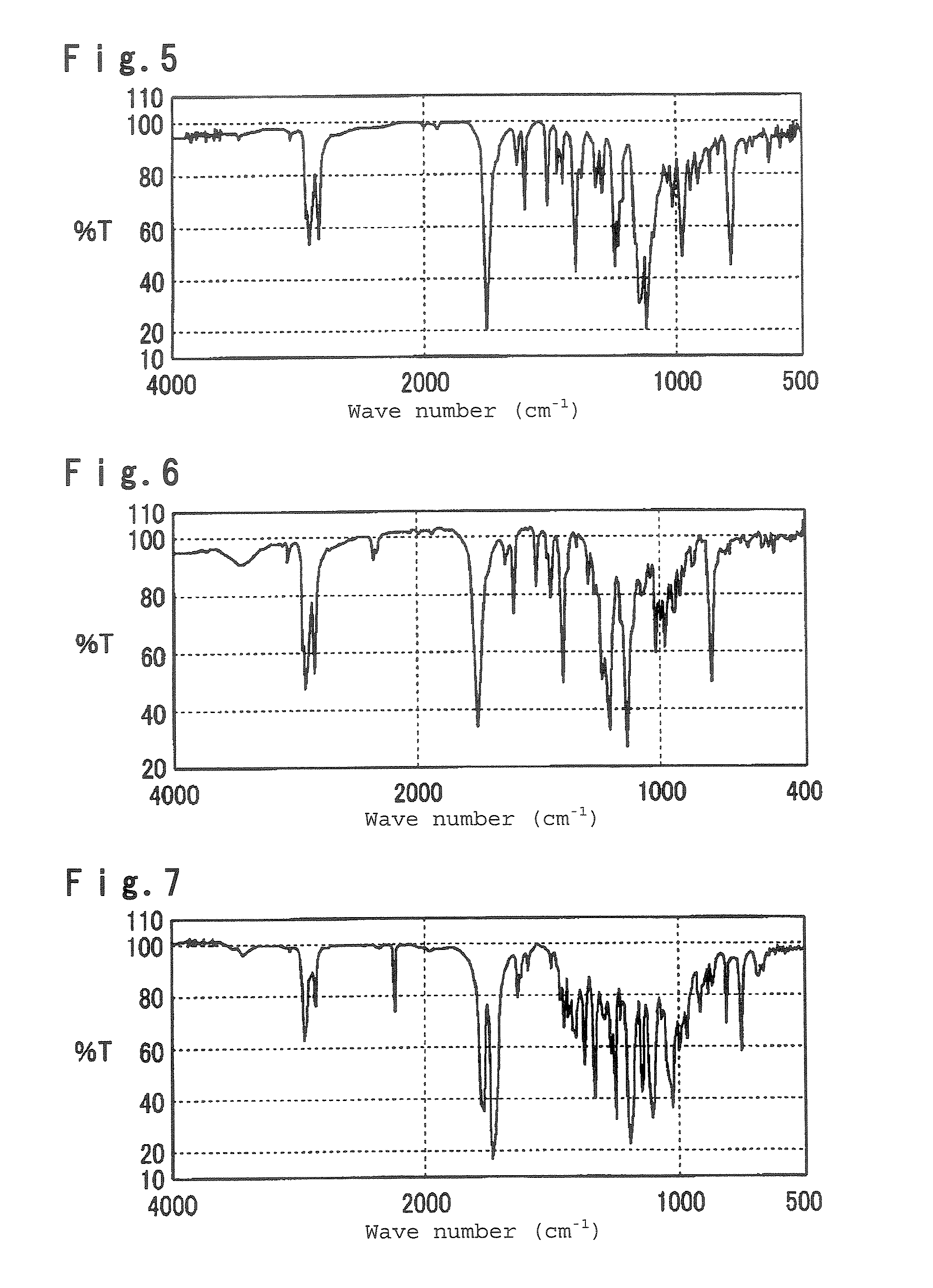Polymerizable liquid crystal composition, optical anisotropic material, optical element and optical head device
a liquid crystal composition and polymerizable technology, applied in the direction of polarising elements, instruments, record information storage, etc., can solve the problems of insufficient improvement of wavelength dispersion properties in some cases, poor wavelength dispersion properties of wave plates using them, and poor wavelength dispersion properties of wave plates. , to achieve the effect of excellent diffraction efficiency and reduced wavelength dependence of phase differen
- Summary
- Abstract
- Description
- Claims
- Application Information
AI Technical Summary
Benefits of technology
Problems solved by technology
Method used
Image
Examples
example 1
Preparation of Compound (1A)
[0186]
example 1-1
Example for Preparation of Compound (7)
[0187]
[0188]An acrylic chloride (19 g, 0.21 mol) was added to a mixture of 1,5-dihydroxynaphthalene (32 g, 0.2 mol), tetrahydrofuran (THF) (160 mL) and triethylamine (21.3 g, 0.21 mol) while cooling with ice water over a period of one hour. On that occasion, the reaction solution was vigorously stirred to keep the reaction temperature be at most 20° C. After stirring for 12 hours, the reaction solution was left at rest and subjected to filtration under reduced pressure, and the filtrate was vacuum concentrated.
[0189]Then, dichloromethane (100 mL) was added to the concentrated filtrate and left at rest. The precipitated solids were removed by filtration, and the filtrate was vacuum concentrated. Dichloromethane (50 mL) was added to the residue after concentration, and subjected to column chromatography (bulking agent: basic alumina, developing solvent: dichloromethane). After effusion of 1,5-diacryloyloxynaphthalene as a by-product was confirmed...
example 1-2
Example for Preparation of Compound (1A)
[0190]Trans-4-n-butylcyclohexanecarboxylic acid (5.0 g, 0.027 mol) was dissolved in THF (150 mL), and triethylamine (5.5 g, 0.055 mol) and methanesulfonic acid chloride (3.15 g, 0.027 mol) were added thereto, followed by stirring at −25° C. for one hour. To this mixed solution, compound (7) (5.35 g, 0.025 mol) obtained in Example 1-1 and 4-dimethylaminopyridine (0.61 g, 0.005 mol) were added, followed by stirring at −10° C. for one hour.
[0191]Then, the reaction solution washed with a 10% sodium hydrogen carbonate aqueous solution and water, dried over anhydrous sodium sulfate and vacuum concentrated. The residue after concentration was subjected to silica gel column chromatography (developing solvent: dichloromethane) to obtain a fraction containing compound (1A). This fraction was concentrated and then recrystallized from a solvent mixture of hexane and toluene to obtain powdery crystals (2.96 g) of compound (1A). The yield was 31.2%.
[0192]Th...
PUM
| Property | Measurement | Unit |
|---|---|---|
| height | aaaaa | aaaaa |
| height | aaaaa | aaaaa |
| reaction temperature | aaaaa | aaaaa |
Abstract
Description
Claims
Application Information
 Login to View More
Login to View More - R&D
- Intellectual Property
- Life Sciences
- Materials
- Tech Scout
- Unparalleled Data Quality
- Higher Quality Content
- 60% Fewer Hallucinations
Browse by: Latest US Patents, China's latest patents, Technical Efficacy Thesaurus, Application Domain, Technology Topic, Popular Technical Reports.
© 2025 PatSnap. All rights reserved.Legal|Privacy policy|Modern Slavery Act Transparency Statement|Sitemap|About US| Contact US: help@patsnap.com



